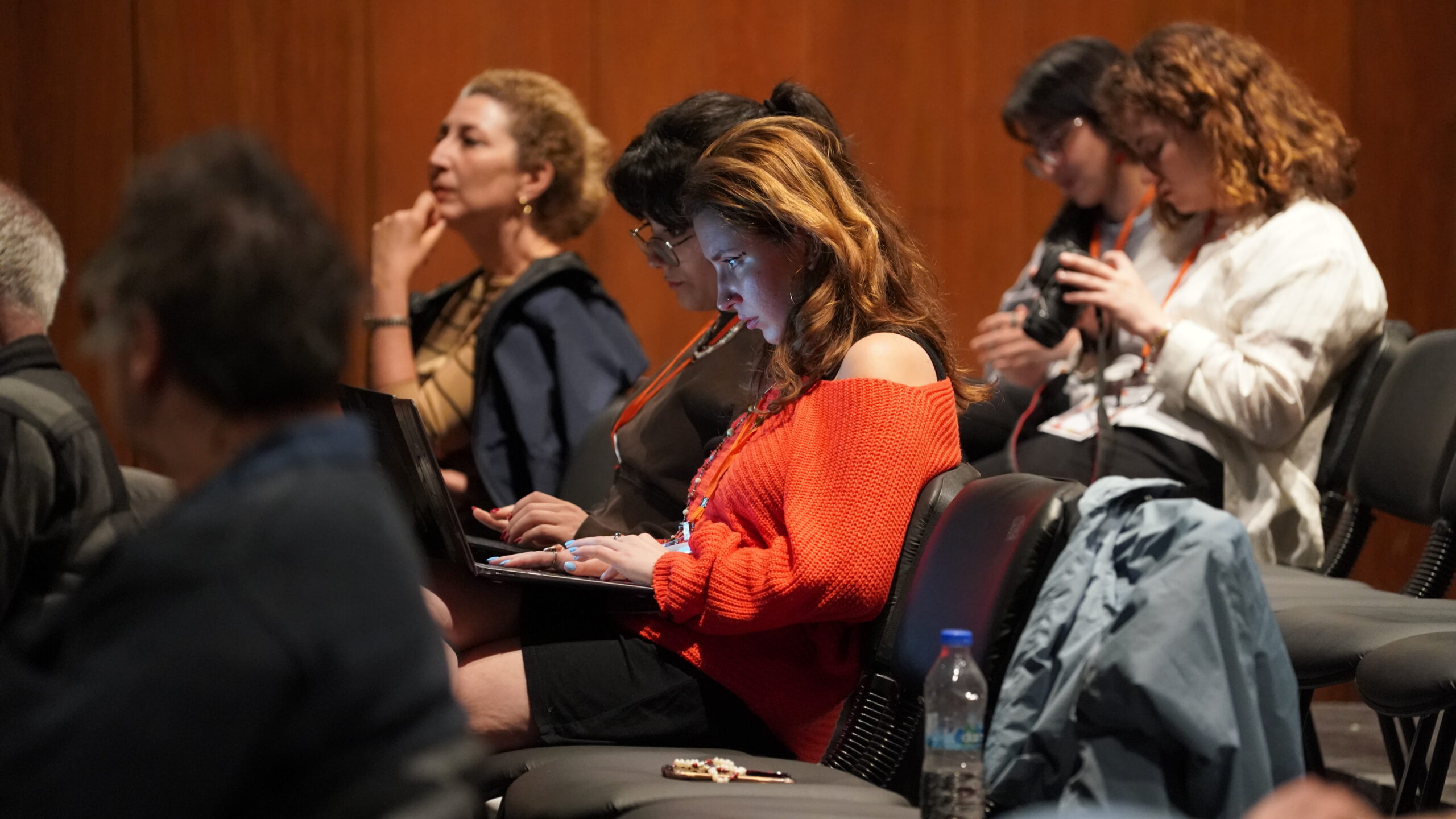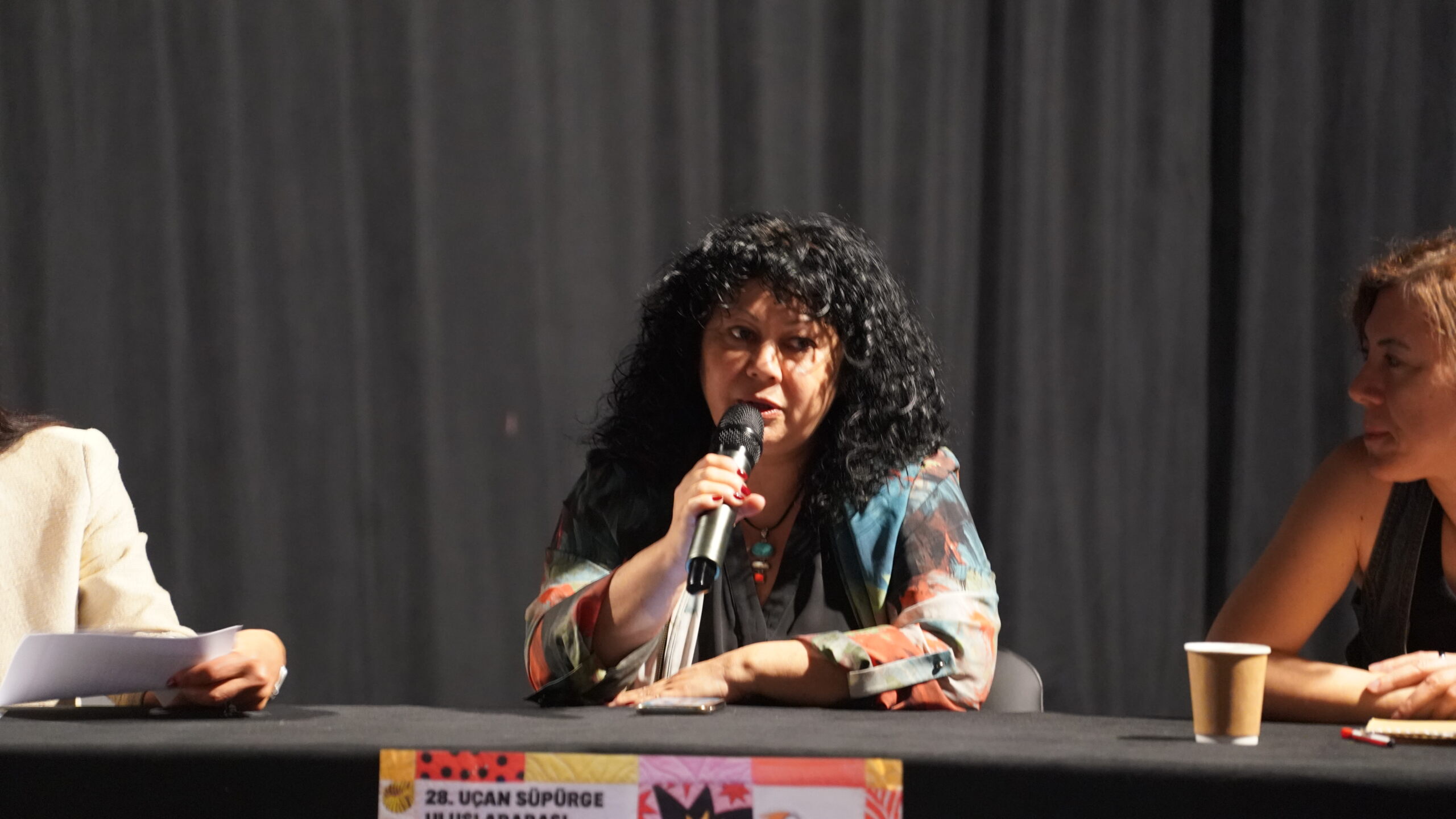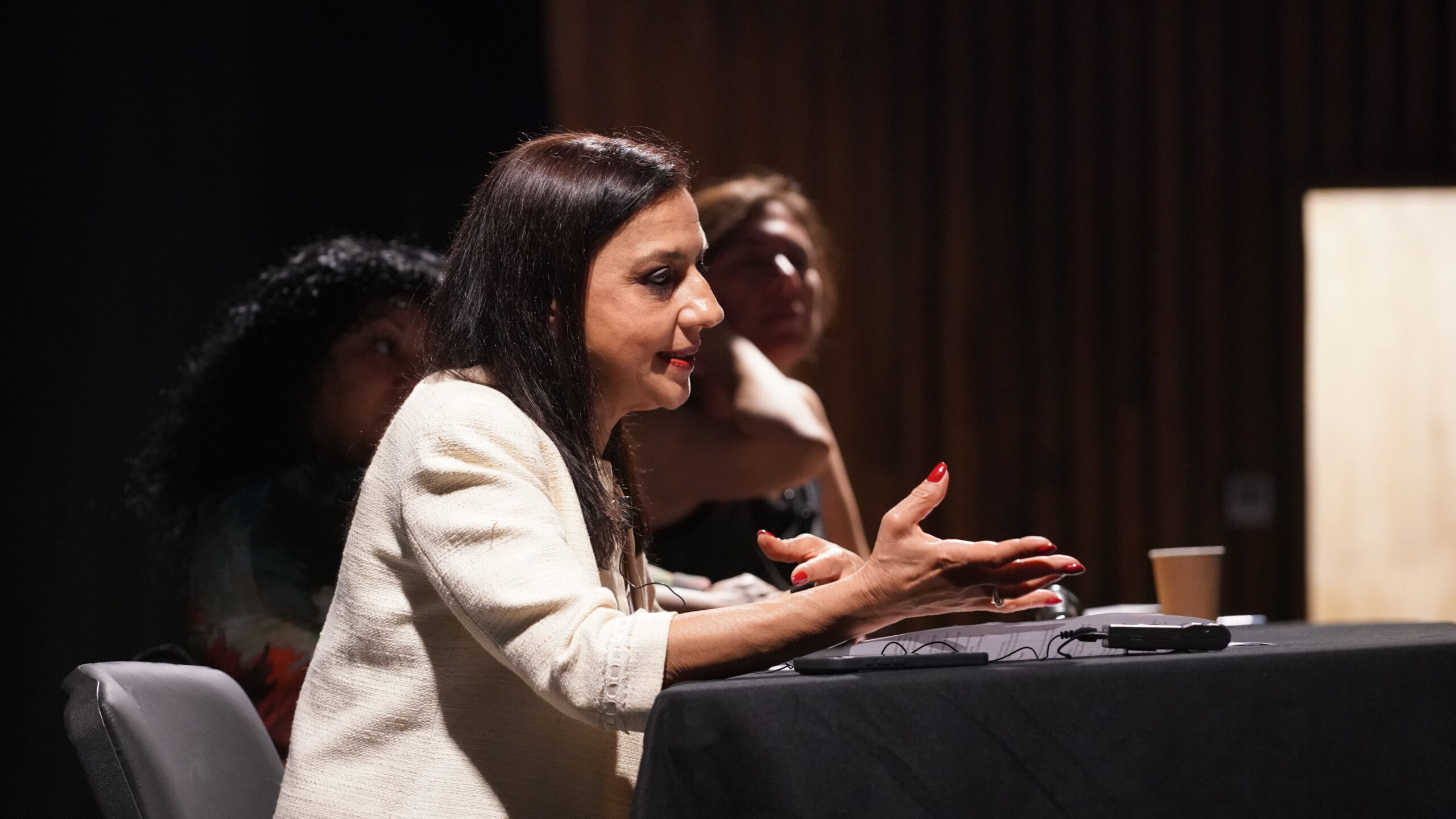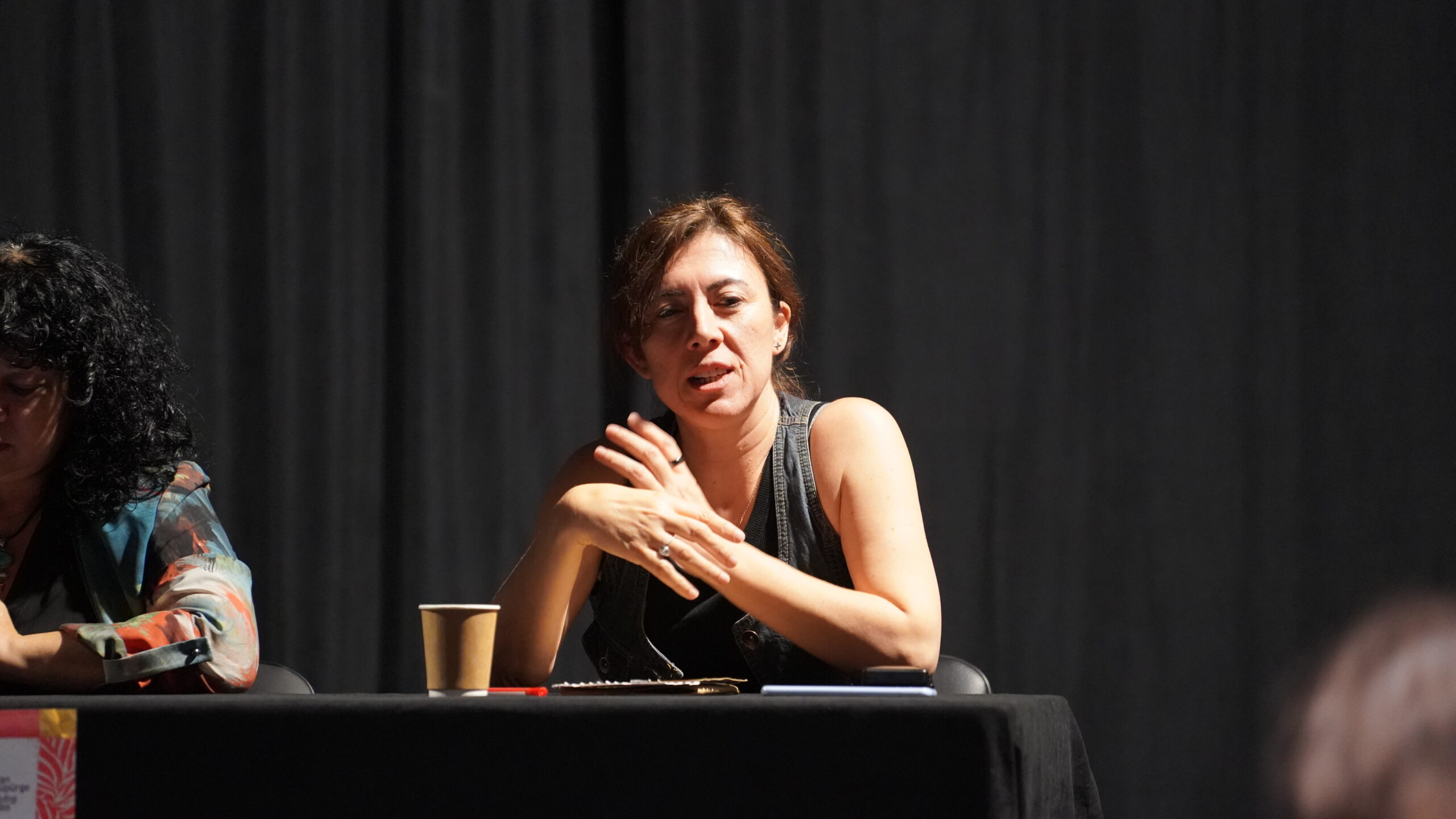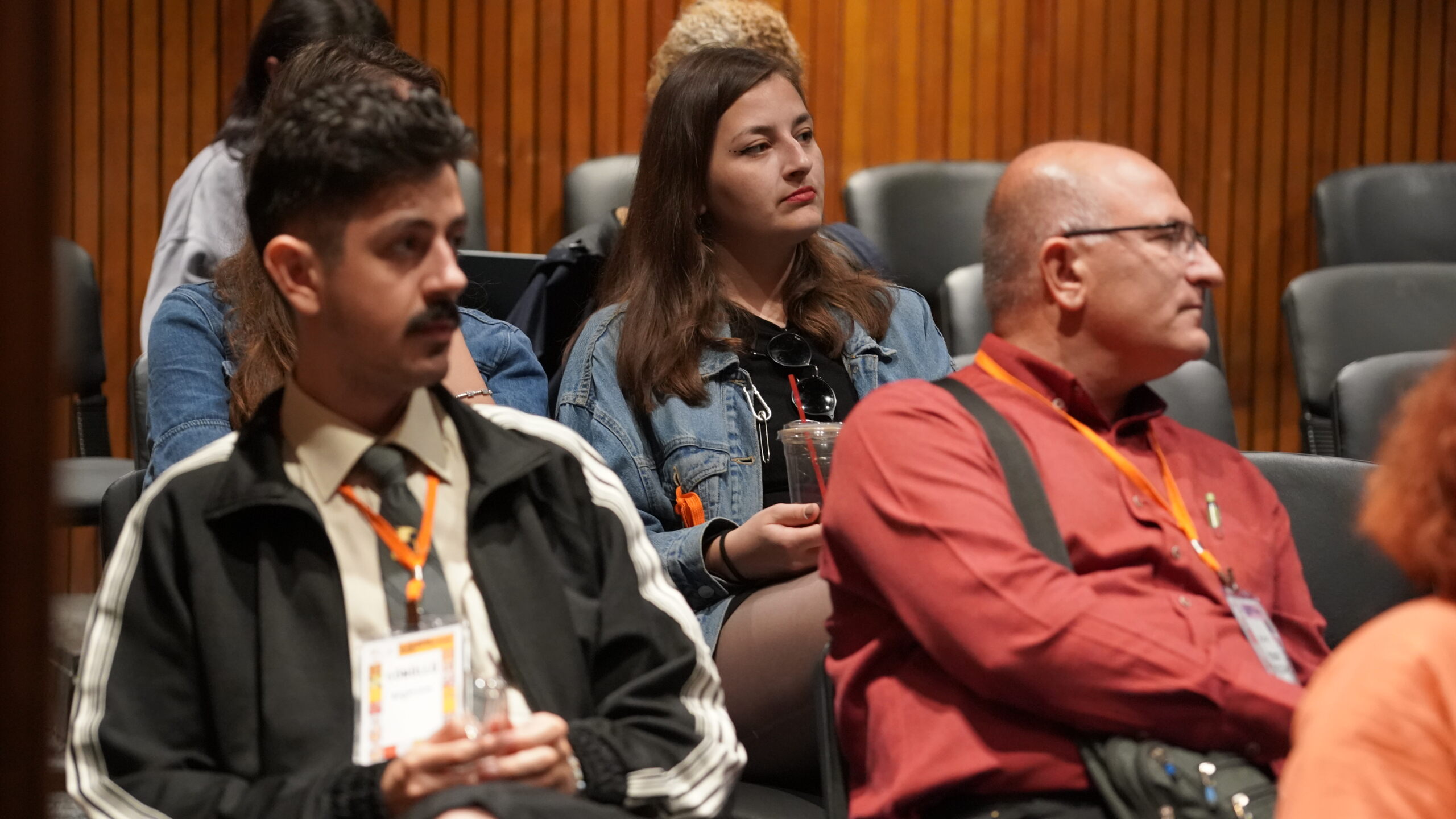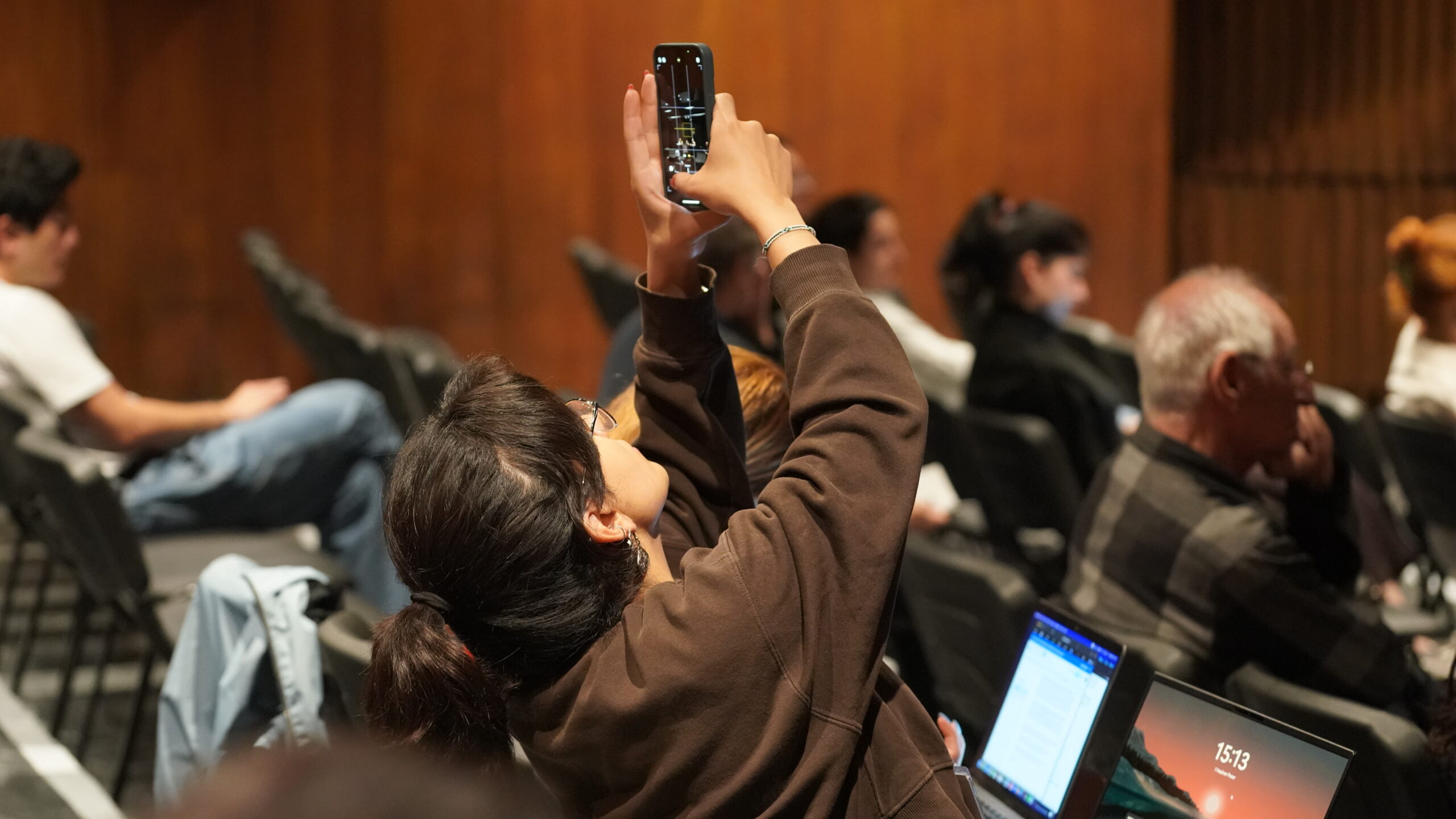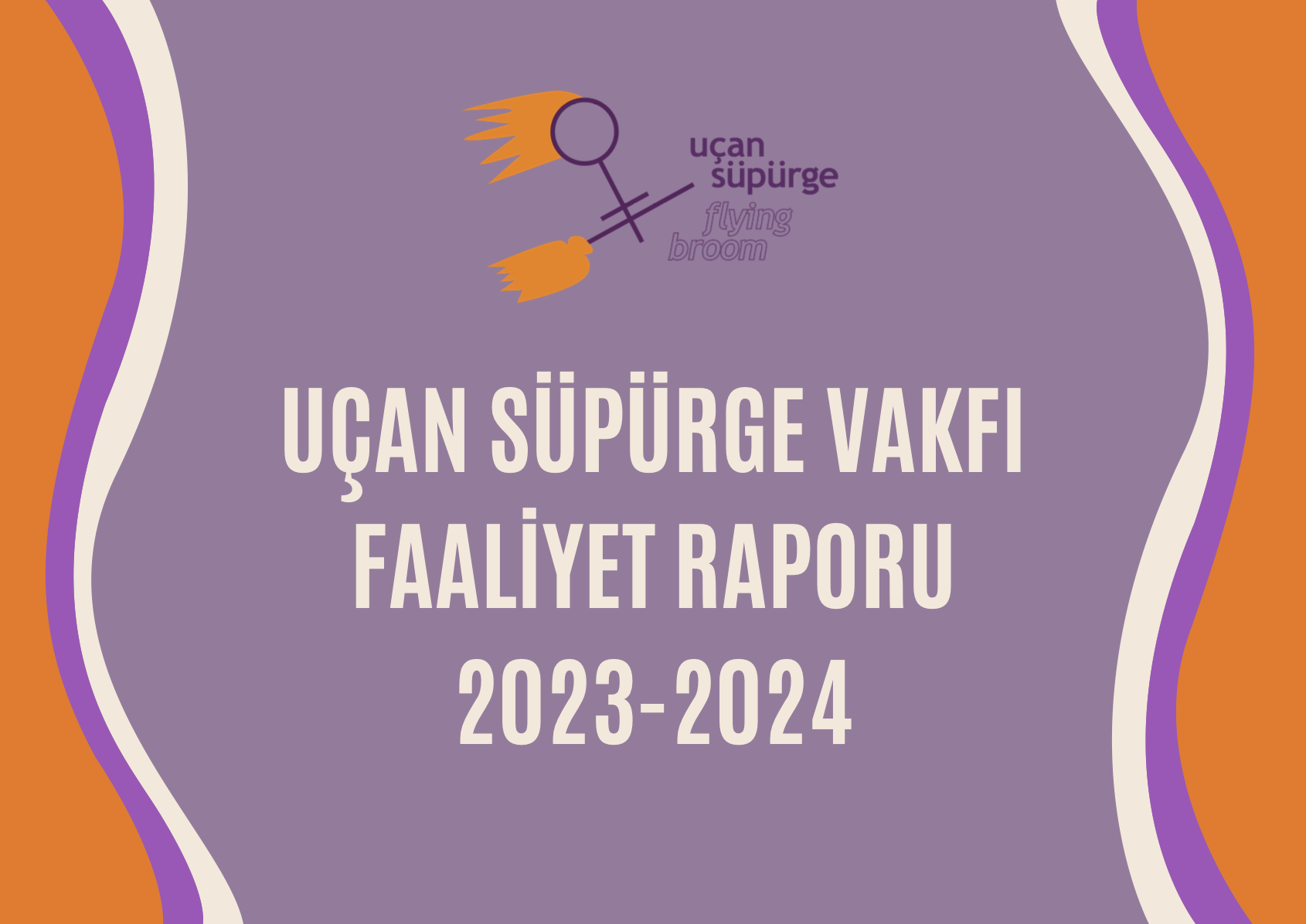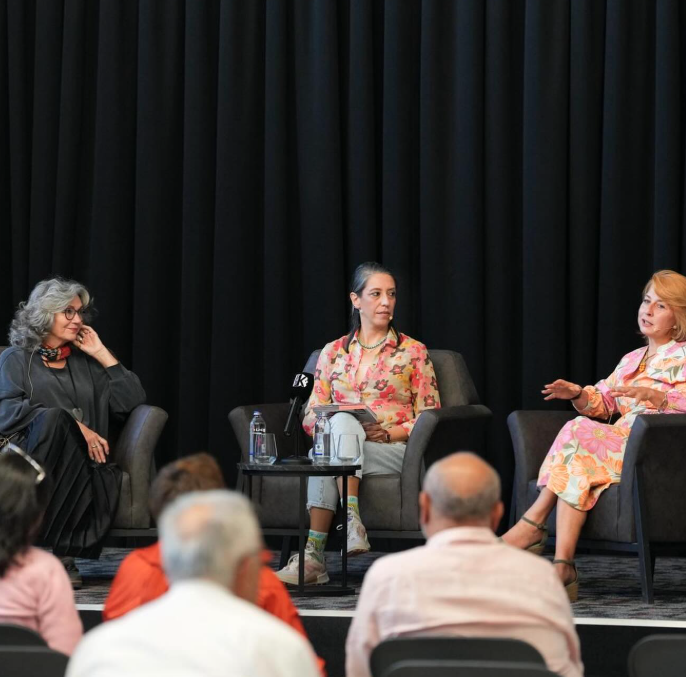Paylaş
The “Frightening Change – Body Horror Films” panel, moderated by Çiğdem Vitrinel, who won the Best Director Award at the 48th Golden Orange Film Festival with her film “What Remains” as part of the 28th Flying Broom International Women’s Film Festival, and with the participation of Crime and Punishment Film Festival Director and Psychiatrist Prof. Dr. Bengi Semerci and Ankara University Faculty of Communication, Department of Television and Cinema Research Assistant Tuğçe Kutlu, took place on June 1, 2025 at the Kült Kavaklıder Cinema.
“Meaning Begins Where the Body Deteriorates”
“Meaning Begins Where the Body Deteriorates”
Women Embrace Body Horror
Opening the panel, Alin Taşçıyan referenced the genre’s history, noting that the body horror tradition, which began with Mary Shelley’s Frankenstein, had gradually become male-dominated. However, in recent years, female directors have reclaimed the genre with feminist perspectives. Films like Raw and Titane were cited as key examples of this transformation.
“Body Horror Responds to the Anger Within Me”
Director Çiğdem Vitrinel began her relationship with the genre by saying, “Body horror’s fragmentation of bodily integrity is a very controversial topic for me.” Vitrinel, noting that American Psycho was the film that drew her to the genre, said, “It was important for female directors to create space through male victims.” Vitrinel also emphasized that female characters are more easily victimized in body horror, adding, “The social pressure on women’s bodies can be expressed very powerfully in this genre.”
The director, who stated that topics such as plastic surgery and daily physical interventions have become the real-life counterparts of this genre, said, “I was very disturbed while watching the waxing scene in Raw, but later I realized that it is quite normal for us.”
Psychological Depth and Repressed Desires
Professor Dr. Bengi Semerci analyzed the psychological aspects of body horror through the lens of Freud and Lacan. “Fear is an emotion that protects us. These films release endorphins, which is why we experience both fear and pleasure,” Semerci said, adding that the appeal of this genre lies in the safe experience of repressed desires we cannot confront in cinema.
Citing the film Substance as an example, Semerci said, “These films, which involve a direct attack on ego integrity, transform into an unconscious adventure that extends to fractures in the mirror stage.” The female character in Substance’s loss of her body for beauty can be interpreted as both a birth and a split identity.
Abortion, Aesthetics and Body Politics
Alin Taşçıyan emphasized that abortion is one of the most important issues in feminist cinema, noting a significant difference in how men’s and women’s cinema approach this theme. “Female directors don’t denigrate women through abortion; they defend the freedom of the body,” he said.
The panel featured the 4th and 5th days of the festival. Current films like Stepsister, Revenge, and Attention Junkie were also discussed. Stepsister’s reframing of fairy tales with body horror was considered noteworthy. Vitrinel said, “The attack on the female body by the desire to conform to perceptions of beauty is as disturbing as it is thought-provoking for the audience.”
Can Body Horror Be a Feminist Resistance?
According to Semerci, body transformation is inevitable. She noted that this inevitable process, coupled with societal pressures for beauty, can become a source of resistance for women. “As the body becomes more beautiful, mental health deteriorates,” Semerci said, adding that body deformity in the pursuit of beauty leads not only to physical but also psychological deformities.
Çiğdem Vitrinel summarized her perspective on the genre as follows: “I both have a hard time and enjoy watching body horror. It touches the anger inside me. That’s why it can be a powerful field for feminist cinema.”
